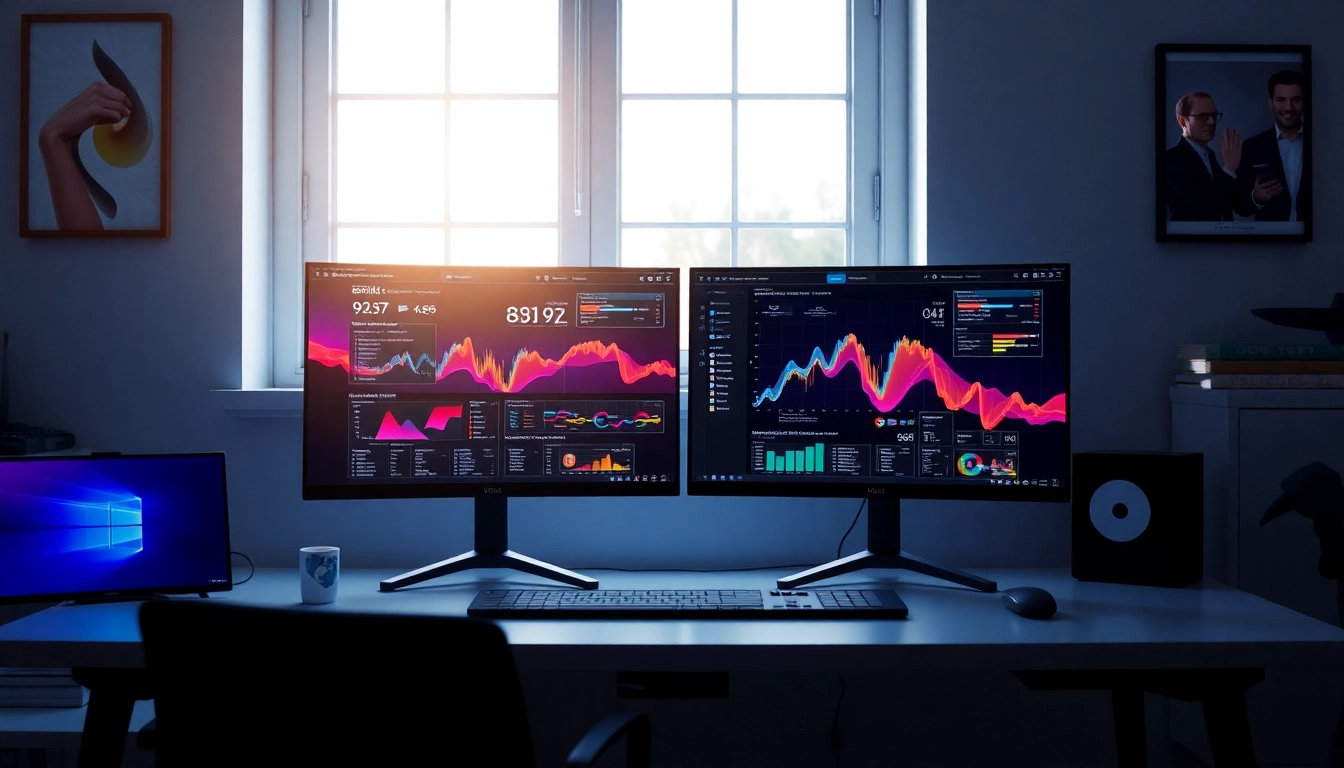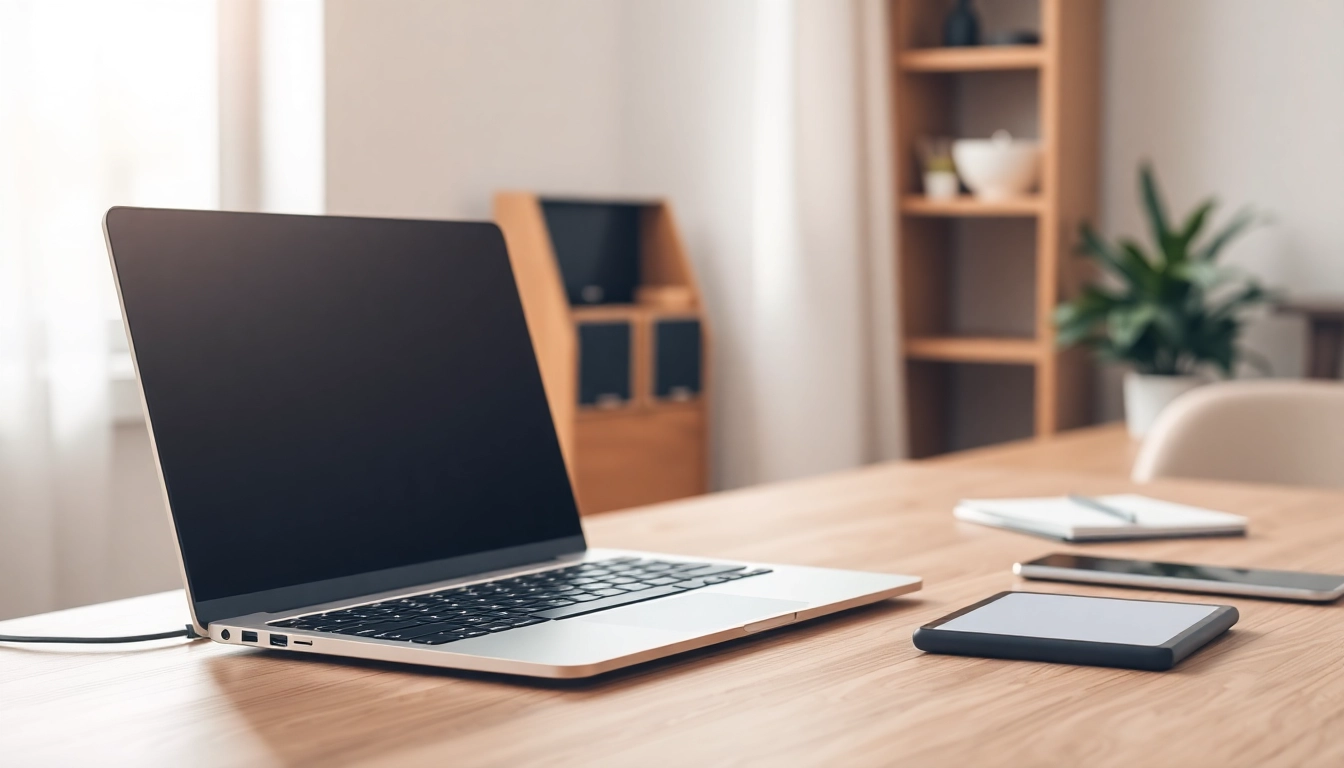Understanding the Basics of Dual Monitor Setup
In today’s fast-paced digital world, having a dual monitor setup has become increasingly popular among professionals and home users alike. The ability to extend your desktop across two monitors can significantly enhance productivity, allow for better multitasking, and optimize your workspace. Whether you are a graphic designer juggling various software programs, a coder who needs to reference documentation while coding, or someone who simply enjoys having more screen real estate, a dual monitor install can be a game changer.
Benefits of a Dual Monitor Install
A dual monitor setup offers numerous advantages that can cater to a variety of needs:
- Enhanced Productivity: Studies show that a dual monitor setup can increase productivity by 20-30%. Users can keep communication tools open on one screen while working on the other.
- Improved Multitasking: Having two monitors allows users to compare documents side by side or stream video content while doing work on the main screen, enhancing overall efficiency.
- Better Organization: You can arrange your workspace more effectively by dedicating sections of your task to each monitor, making it less chaotic.
- Creative Flexibility: For creative professionals, dual monitors facilitate more robust software applications without needing to tab through numerous open windows.
Compatibility Check: Is My Computer Ready?
Before venturing into a dual monitor installation, it’s vital to ensure that your computer supports it. Here’s what to check:
- Graphics Card: Most modern graphics cards have the ability to support dual monitors, but it’s essential to verify the specifications. Check if your GPU has multiple video outputs such as DisplayPort, HDMI, or DVI.
- Operating System: Ensure your operating system supports dual displays. Both Windows and macOS systems typically offer this feature.
- Ports Availability: Confirm available ports on your computer—some models may only support certain display connections.
Your Essential Equipment for a Dual Monitor Install
Setting up dual monitors requires specific equipment. The following items are essential:
- Monitors: Choose monitors that suit your needs in terms of size, resolution, and performance. Having two identical monitors is preferred for a seamless experience but not strictly necessary.
- Cables: Depending on your monitor and computer ports, you may need HDMI, DisplayPort, DVI, or VGA cables. Ensure you have the appropriate type for both monitors.
- Adapters: If your graphics card and monitors don’t directly match, you might need adapters, such as HDMI to VGA, or a USB to HDMI adapter.
Pre-Installation Steps: Preparing for Your Dual Monitor Setup
Gathering Necessary Cables and Adapters
Start by collecting all necessary cables and adapters. Review your computer’s specifications to determine which cables are essential. Plan ahead to ensure you have everything you need to facilitate a smooth installation.
Choosing the Right Monitors for Your Needs
When it comes to selecting monitors, you have several factors to consider:
- Resolution: For tasks requiring precision, like graphic design, opt for higher resolution models such as 4K.
- Size: Larger monitors or those with higher resolutions allow for better multitasking without compromising clarity.
- Type: Blacklit LED monitors tend to offer better color accuracy. Determine whether you prefer IPS for better viewing angles or TN panels for faster response times.
Power Management: Safety First
Before proceeding with the installation, make sure your workflow adheres to power management best practices. Confirm that both monitors are compatible with your power supply, and consider using a power strip to manage the setup effectively.
Installing Dual Monitors: Step-by-Step Process
Connecting Your Monitors to the Computer
The connection process can vary slightly based on the monitors and computer you are using. Follow these general steps:
- Turn off Components: Before plugging in monitors, shut down both your computer and the monitors.
- Connect Monitors: Identify the correct ports on your computer and connect each monitor using the previously gathered cables. Secure connections at both ends to avoid signal issues.
- Power Up: Turn on the monitors first, then boot up your PC.
Configuring Display Settings in Windows
Once both monitors are powered on, configure your settings:
- Right-click on the desktop and select Display settings.
- Under the Multiple displays section, choose how you want to use the monitors (extend, duplicate, etc.) and adjust resolutions as needed.
- Click Apply and check that the arrangement works as intended.
Troubleshooting Common Connection Issues
If you encounter any issues with your dual monitor setup, consider the following troubleshooting steps:
- Check Connections: Ensure all cables are securely connected both to the monitors and the PC.
- Verify Display Settings: Make sure that your computer recognizes both monitors in the display settings.
- Update Drivers: Sometimes, outdated graphics drivers can cause issues. Ensure you have the latest drivers installed from the manufacturer’s website.
Optimizing Your Workspace with Dual Monitors
Best Practices for Monitor Placement
Proper placement of monitors can enhance ergonomics and overall user comfort:
- Height: Center monitors at eye level to avoid neck strain.
- Distance: Place monitors at an arm’s length to reduce eye strain.
- Orientation: Adjust the angle of monitors to minimize glare while keeping screens comfortable to view.
Using Software to Manage Multiple Displays
Leverage software tools that allow for better management of multiple displays:
- DisplayFusion: This software helps manage window placement and does a great job at keeping track of your multiple monitors’ settings.
- Windows 10/11 Features: Utilize built-in features such as Snap Assist for easy window management across your screens.
- Third-Party Applications: Apps like AquaSnap can provide you with more advanced window management capabilities to enhance your dual monitor experience.
Customizing Display Settings for Maximum Efficiency
Customization can significantly impact productivity. Consider adjusting:
- Resolution: Set the optimal resolution for each monitor based on its specifications.
- Color Calibration: Ensure colors are calibrated properly, especially for creative tasks.
- Taskbar Settings: Decide whether you want the taskbar to appear on one or both monitors for accessibility.
Advanced Tips for Proficient Dual Monitor Usage
Keyboard Shortcuts for Effortless Navigation
Keyboard shortcuts can streamline your workflow and improve multitasking efficiency:
- Win + P: Quickly switch display modes between PC screen only, Duplicate, Extend, and Second screen only.
- Alt + Tab: Switch between applications easily on your monitors.
- Win + Arrow Keys: Snap your active window to the side of the screen or extend it between both monitors.
Expanding Beyond Two Monitors: Is It Worth It?
For power users or creative professionals, extending your workspace beyond two monitors can be beneficial, but it comes with considerations:
- Increased Complexity: Managing three or more displays can complicate your setup, requiring more advanced hardware and software.
- Cost: More monitors and necessary cables/adapters mean a larger investment.
- Ergonomics: Monitor placement becomes more critical to avoid strain when using multiple screens.
Real-World Use Cases: Who Benefits the Most from Dual Monitors?
Various professions can tap into the advantages of dual monitors:
- Developers: Keep documentation and code side by side without constant window switching.
- Graphic Designers: View designs alongside color palettes and editing tools.
- Finance Professionals: Monitor live financial data while working on reports or charts.



